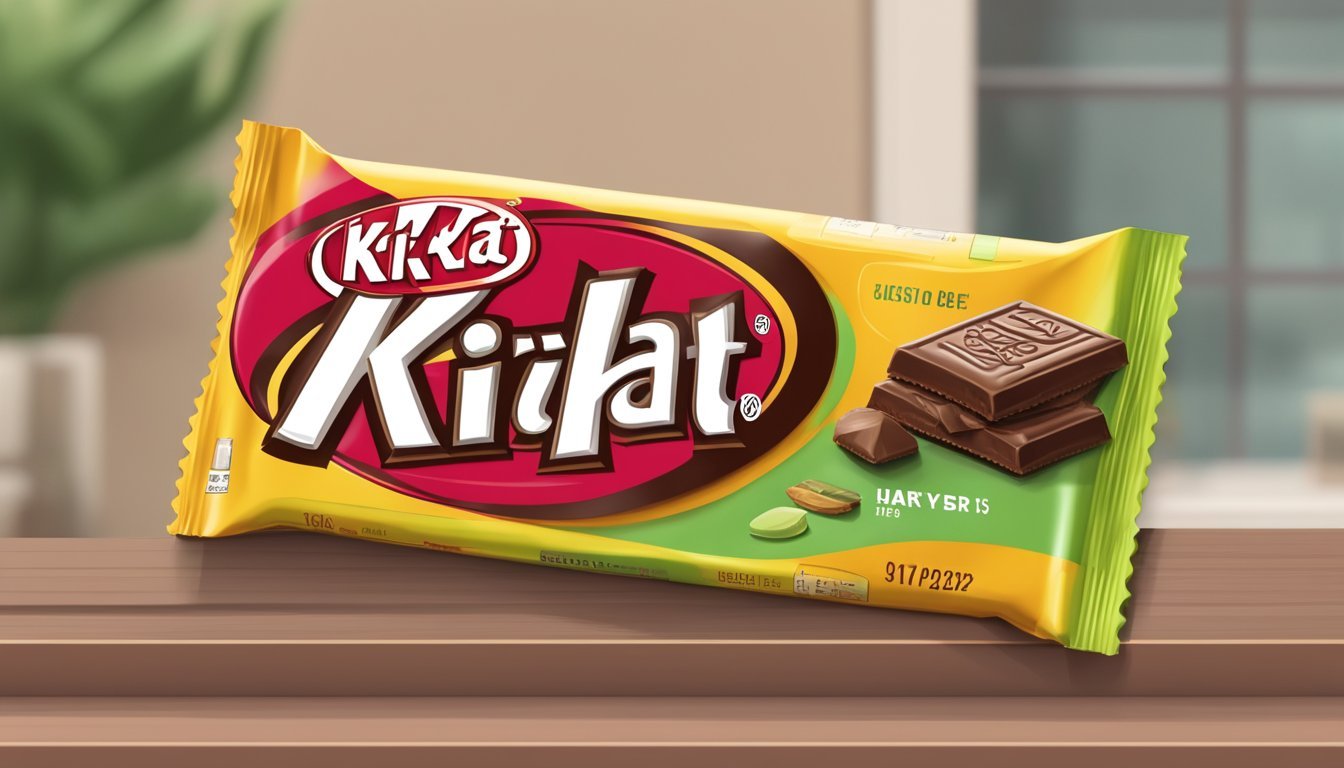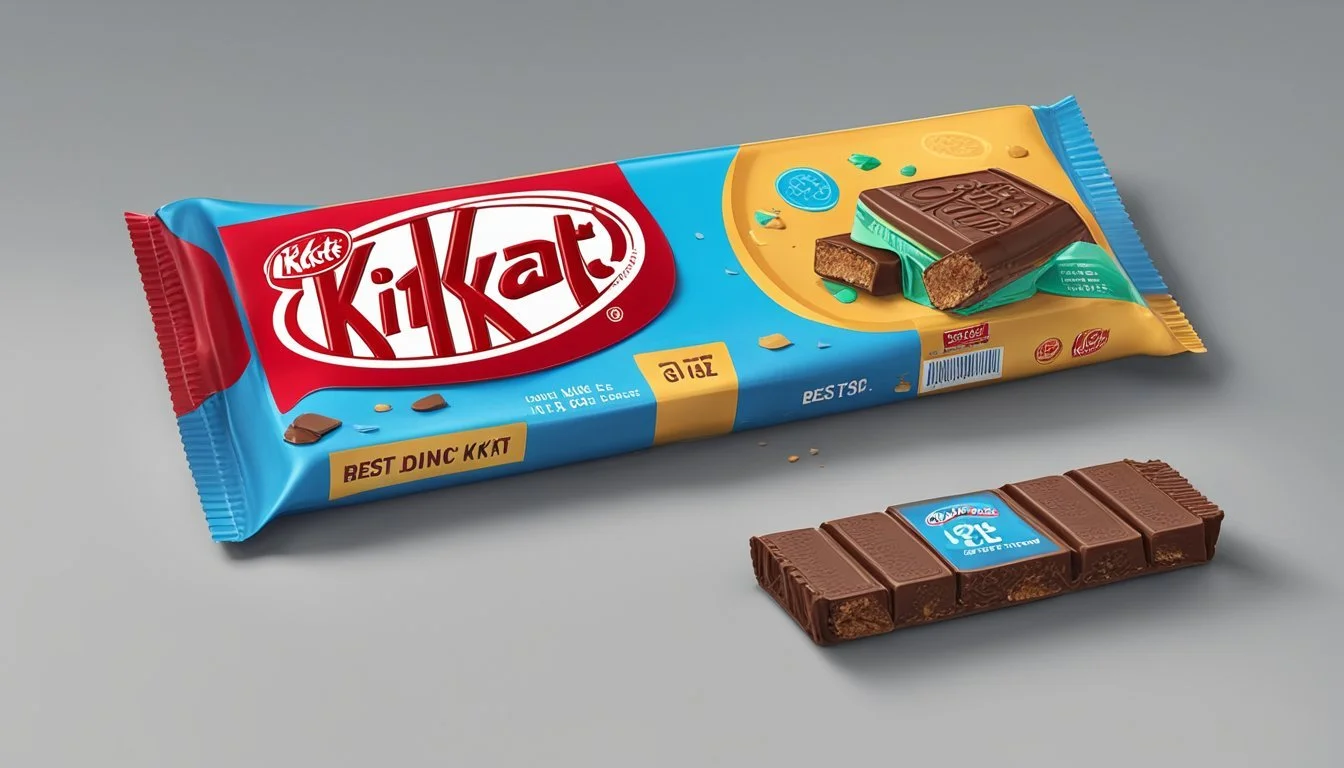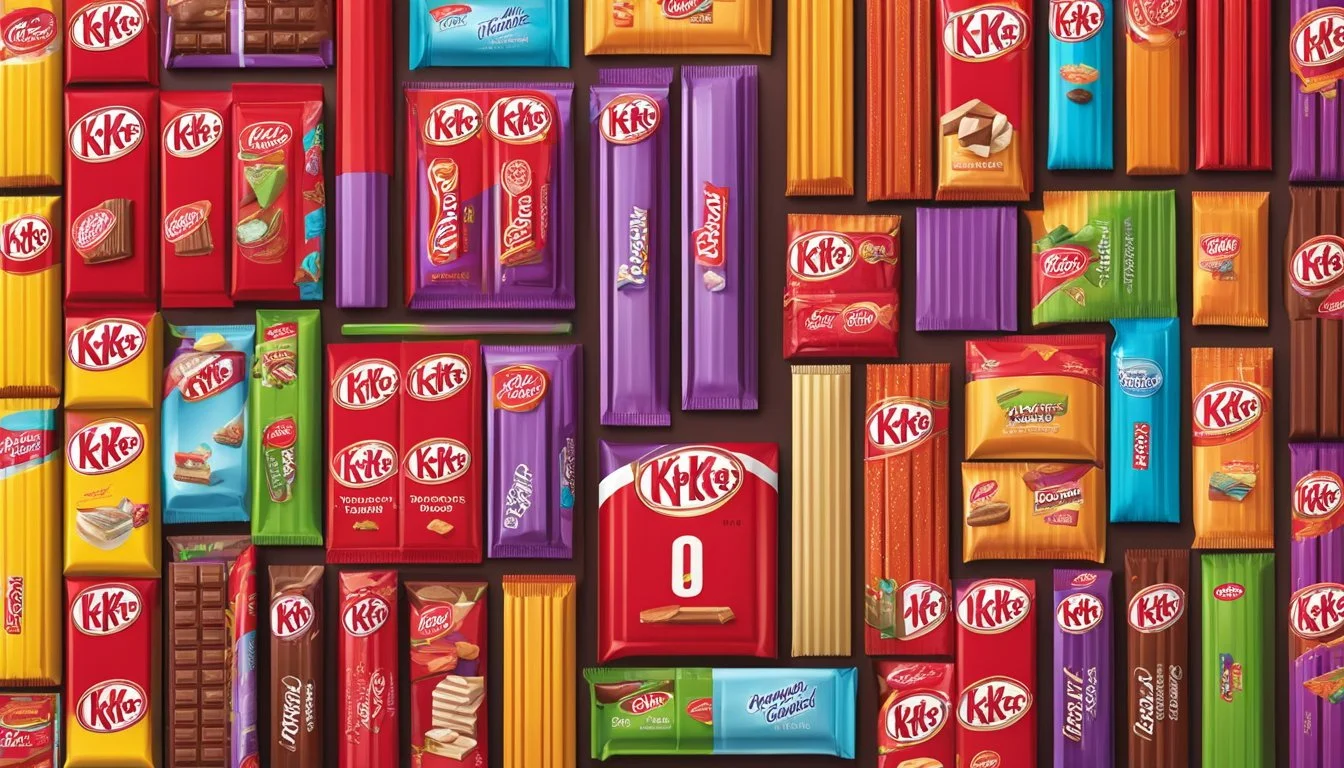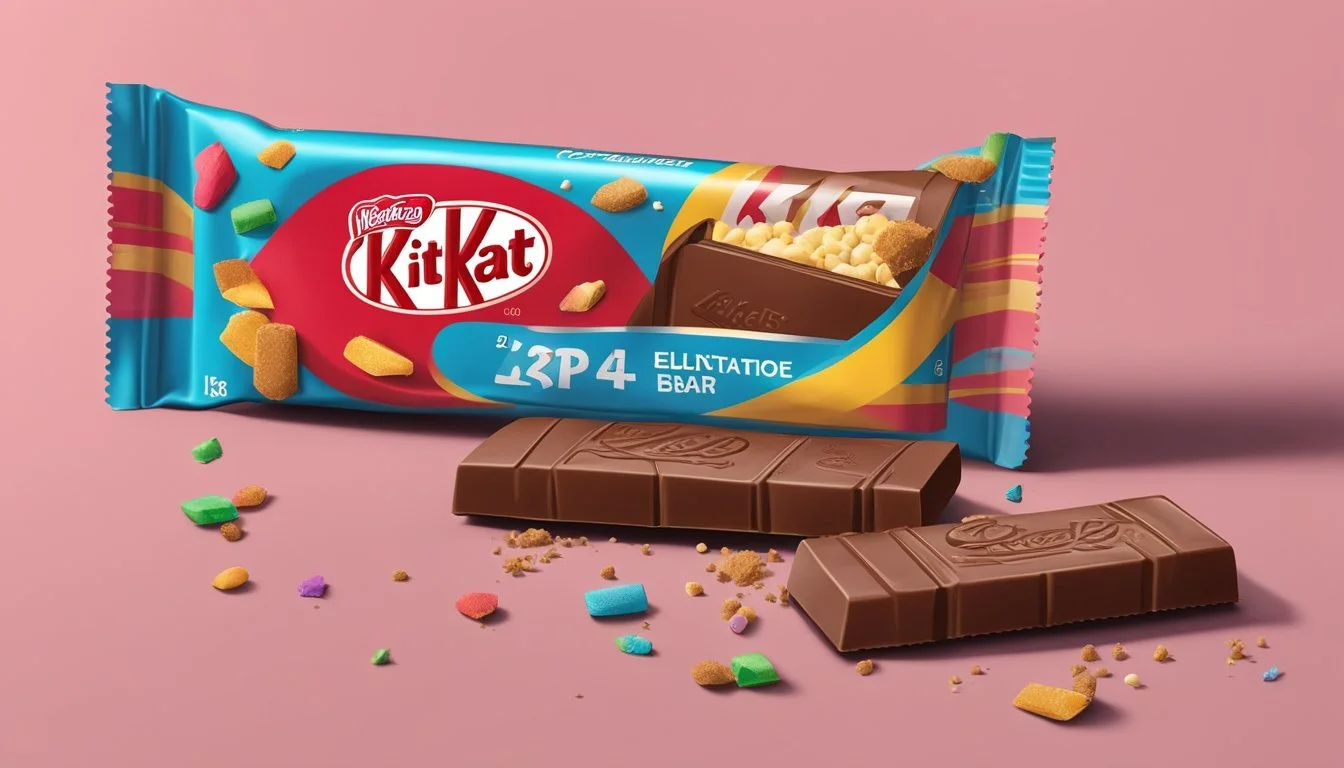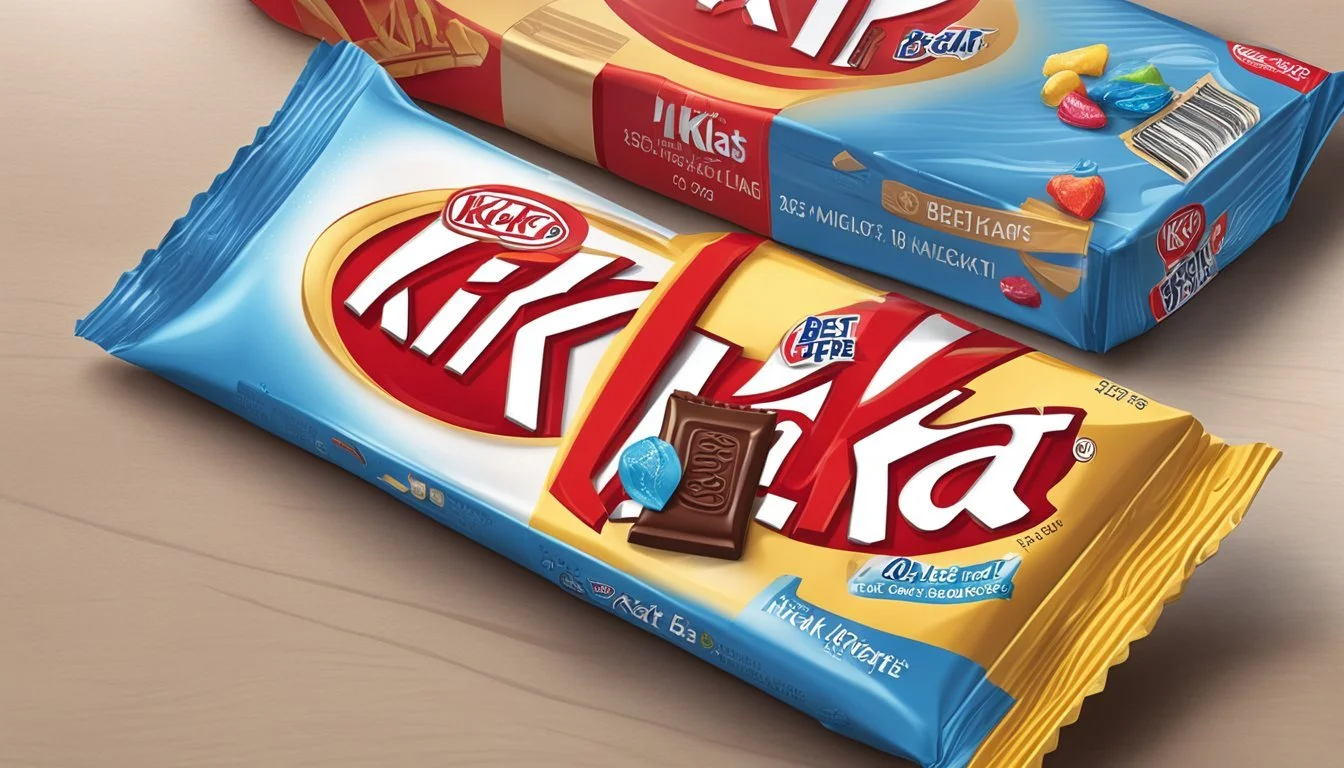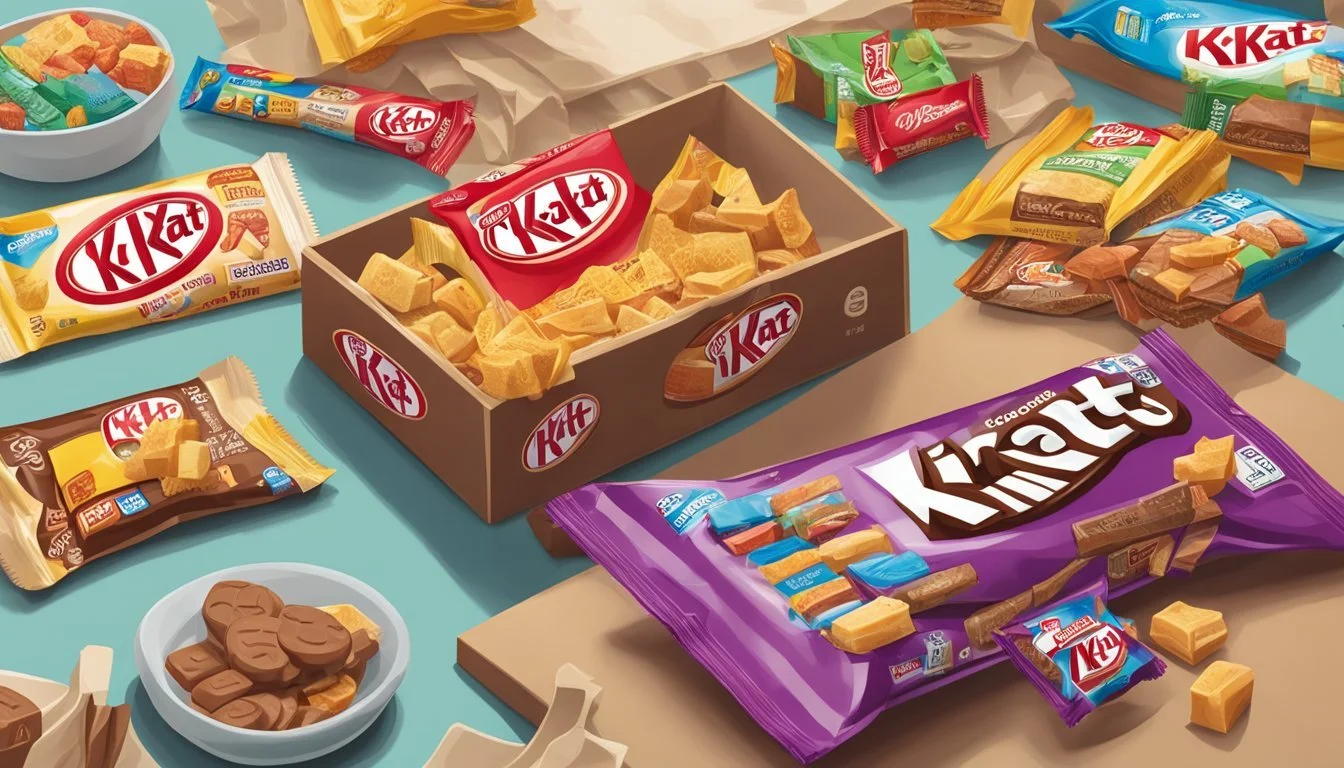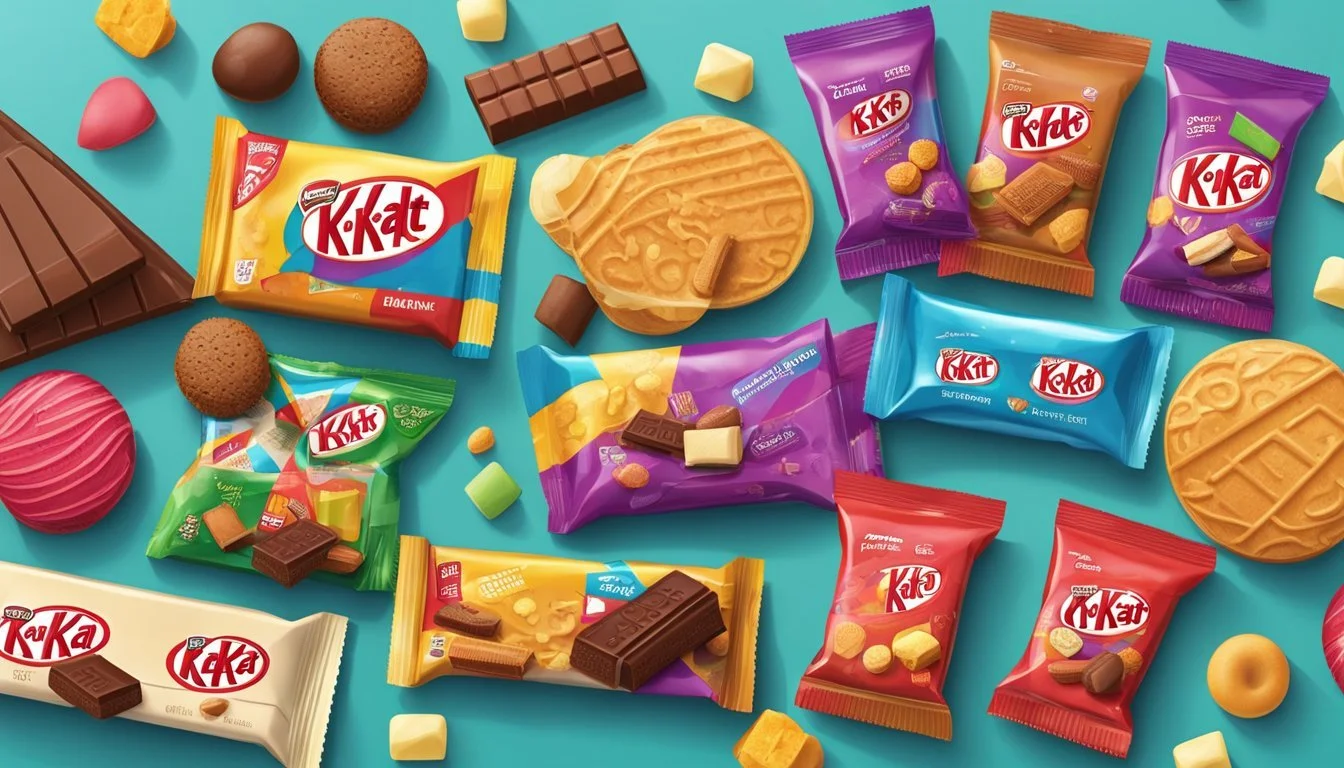How Long Does Kit Kat Last?
Unwrapping the Shelf Life Secrets
Kit Kats, a popular chocolate-covered wafer biscuit bar confection, are known for their crunchy texture and sweet taste. Consumers often wonder about the shelf life of this candy, especially when they have surplus quantities that they can't immediately consume. The longevity of Kit Kats is influenced by the ingredients, primarily sugar (how long does sugar last?) and chocolate (What wine goes well with chocolate?), which act as preservatives and extend the product's shelf life.
The manufacturer typically provides a 'best before' date on the packaging, which suggests when the Kit Kat is expected to retain optimum quality. This date is not an expiration date but rather a guideline for consumers to enjoy the product at its best. Generally, Kit Kats can still be consumed beyond this date without health risks, although the texture or taste may alter over time.
Proper storage is key to maximizing the shelf life of Kit Kats. They should be kept in a cool, dry place away from direct sunlight and any strong odors that might affect their flavor. While the exact time frame varies, Kit Kats are often good to eat 6 to 12 months past their best before date if stored correctly, although some suggest that they can last a few weeks beyond the stated date in various storage conditions.
Understanding Kit Kat Ingredients
Kit Kat bars are a popular chocolate confectionery with several key ingredients that determine their flavor, texture, and shelf life. The primary components of a standard milk chocolate Kit Kat include sugar, cocoa, wheat flour, and milk. Sugar is a crucial ingredient as it not only sweetens the product but also acts as a preservative, which can contribute to a longer shelf life.
Sugar: Elevates taste and acts as a preservative.
Cocoa: Provides the distinctive chocolate flavor.
Wheat Flour: Used in the wafer, contributing to texture.
Milk Chocolate: The main coating of a Kit Kat bar.
The presence of milk chocolate gives Kit Kat its creamy taste, while dark chocolate and white chocolate are used in various specialty Kit Kats to create diverse flavor profiles. The milk in Kit Kats is often in powder form, which contributes to the creamy texture and also includes some fat content that can affect the calories.
Nutritional Aspects:
Calories: Each serving size typically contains a certain amount of energy measured in calories.
Protein: Milk-based ingredients contribute to the protein content.
Fiber: Minimal, as it is not a focus in the candy's formulation.
Regarding preservatives, Kit Kats generally do not contain traditional preservative chemicals; they rely on the low moisture content and the sugar's preservative qualities to maintain their shelf life.
Kit Kats are produced in a variety of formats, including milk, dark, and white chocolate versions, each containing different ratios of the main ingredients. The caloric value and nutritional content such as protein and fiber will vary based on these ratios and specific additional ingredients used in different variants.
Kit Kat Shelf Life Basics
When assessing the longevity of Kit Kat bars, two primary aspects come to the fore: the quality indicators present in the chocolate and the various shelf-life factors that influence its freshness duration.
Quality Indicators
Quality of a Kit Kat bar can be ascertained through several indicators, including texture, taste, and appearance. A fresh Kit Kat should have a crisp wafer and smooth chocolate coating. As the chocolate ages, it may become stale or develop a white bloom, which, while not harmful, indicates a degradation in quality.
Shelf Life Factors
Several factors affect the shelf life of Kit Kat chocolate:
Expiration Date: Kit Kat packages display a 'best before' date, which suggests the timeframe within which the manufacturer guarantees the product's optimal quality.
Storage Conditions: To prolong freshness, Kit Kats should be stored in a cool, dry place away from direct sunlight. Ideal conditions can extend a Kit Kat's shelf life to between 6 to 12 months past the 'best before' date.
Product Variant: Different flavors and formulations can also have varying shelf lives.
Packaging Integrity: Compromised packaging can expose Kit Kats to air and moisture, hastening the process by which they expire or go bad.
Consumption past the 'best before' date is often safe, but the quality — a hallmark of the Kit Kat experience — may not be assured.
Storing Kit Kats Properly
Storing Kit Kats in optimal conditions extends their shelf life and preserves their quality. A cool, dry place away from direct sunlight is crucial to prevent spoilage and maintain taste.
Room Temperature Storage
Kit Kats should be stored at room temperature, ideally between 60-75°F (15-24°C). The location should be dry to minimize the risk of moisture-induced spoilage. Storage tips include:
Airtight containers: Store Kit Kats in airtight containers to protect them from humidity and pests.
Away from heat sources: Keep them away from stoves, heaters, and direct sunlight which can cause melting.
Refrigeration and Freezer Options
For longer storage, Kit Kats can be placed in the refrigerator or freezer. Consider the following:
Refrigerator: Ensure the storage space is dry to prevent condensation from affecting the chocolate's texture.
Freezer: Wrap Kit Kats in plastic wrap or place them in an airtight bag before freezing to prevent freezer burn and absorbance of other food odors.
Signs of a Spoiled Kit Kat
Identifying a spoiled Kit Kat is important to ensure both enjoyment and food safety. The following subsections guide you through the visual and olfactory indicators that signal a Kit Kat has gone bad.
Visual Cues
When inspecting a Kit Kat for freshness, visual signs are often the first indicator. Look for:
Mold: Any visible mold growth is a clear sign that the Kit Kat should be discarded.
Discoloration: If the chocolate appears white or gray, this could indicate chocolate bloom—a reaction where sugar or fat rises to the surface. While not harmful, it signifies that the chocolate might taste stale.
Wrapper: Damage to the packaging could have exposed the Kit Kat to air or contaminants.
Changes in Taste and Smell
A Kit Kat past its prime might also display:
Unpleasant Taste: If the chocolate tastes off or lacks its characteristic flavor, it has likely gone stale.
Strong Odors: An unusual or strong odor is a telltale sign that the Kit Kat should not be consumed, as it indicates spoilage.
Extending the Life of a Kit Kat
Preserving Kit Kat bars beyond their typical shelf life requires attention to storage conditions, packaging, and understanding of the expiration date. To maximize the longevity of a Kit Kat, one should keep these factors in mind:
Ideal Storage Conditions:
Temperature: Store Kit Kats in a cool, dry place, where the temperature is stable. Excessive heat or fluctuations can cause the chocolate to melt or bloom.
Light: Keep them away from direct sunlight which can degrade the quality.
Airtight Packaging: Once opened, a Kit Kat should be sealed in an airtight container to protect it from moisture and other contaminants.
Refrigerating Kit Kats:
For those living in hotter climates, placing Kit Kats in the refrigerator can help extend their freshness. However, to prevent condensation and sugar bloom when returning to room temperature, one should consider sealing them in airtight containers or wrapping them tightly with plastic wrap.
Pay Attention to Expiration Dates:
Although Kit Kats can last past their best before date, one should consume them before the expiration date for optimal taste and quality.
Using Preservatives:
Kit Kats already include preservatives to maintain freshness, hence there's no need for additional preservatives at the consumer's level.
By following these guidelines, consumers can help ensure that their Kit Kats remain fresh and delicious for as long as possible, avoiding waste and ensuring a better chocolate experience.
Impact of Different Kit Kat Varieties
The shelf life and freshness of Kit Kat bars can vary depending on their variety. Different flavors and special editions may have unique ingredients or storage needs affecting their longevity.
Flavor-Specific Considerations
Mint and Green Tea: Flavors like mint and green tea may alter the shelf life of Kit Kat bars due to their unique ingredients. These flavors often contain additional oils, which can contribute to faster spoilage if not stored properly.
Peanut Butter and Caramel: Kit Kats with fillings such as peanut butter or caramel might have a shorter lifespan than the classic variety. The high-fat content in these fillings can cause them to go rancid quicker.
Cookies and Cream: With more complex mix-ins like cookie pieces, cookies and cream Kit Kats could potentially have a slightly different shelf life due to the additional non-chocolate ingredients.
Special Editions and Novelty Versions
Special edition Kit Kats often have a collectible aspect and may be consumed quickly, but if they're kept for later, consumers should note that the shelf life could be affected by the novelty ingredients. These versions may incorporate less-common components that could behave differently under various storage conditions compared to standard Kit Kats. It's also important to consider that limited runs might not undergo the same longevity testing as permanent offerings, potentially resulting in a shorter optimal consumption period.
Consumption Safety and Best Practices
Proper assessment of candy freshness and adherence to food safety guidelines is crucial in determining if a candy bar, such as Kit Kat, is safe to consume. Consumers should distinguish between the best before date for quality assurance and the point of potential spoilage.
Assessing Candy Freshness
Shelf Life: Kit Kat bars generally maintain freshness for 6 to 12 months under appropriate storage conditions. After this period, although not necessarily spoiled, the quality may decline.
Indicators of Freshness:
Texture and Appearance: A fresh Kit Kat should have a crisp wafer with a smooth chocolate coating.
Color: Look for any discoloration, such as a white film that can indicate cocoa butter (how long does cocoa butter last?) separation.
Odor: An off-smell is a clear indication that the chocolate may not be at its best quality.
Food Safety Guidelines
Determining Safety:
Best Before Date: This date indicates when a Kit Kat is expected to be at its optimal quality. It's usually safe to eat a Kit Kat beyond this date if its been stored correctly, but its sensory quality might be compromised.
Spoilage Signs: Detectable changes in taste, smell, or texture can suggest spoilage and one should avoid consumption.
Note on Storage:
Temperature: Store Kit Kats in a cool, dry place away from direct sunlight.
Humidity: High humidity can lead to chocolate bloom, where sugar or fat rises to the surface, altering texture and appearance but not necessarily safety.
Nutritional Considerations
When examining the nutritional profile of Kit Kats, consumers are looking at a snack that possesses a combination of sugar, fat, and a moderate amount of calories. A typical Kit Kat bar's nutrient distribution is centered around its key ingredients, which include chocolate, wheat flour, sugar, and milk.
Calories: The average serving size of a Kit Kat bar, which typically constitutes four fingers, contains approximately 210 to 220 calories. These calories are primarily derived from carbohydrates and fats.
Protein: Kit Kats offer a minimal amount of protein, generally around 2 to 3 grams per serving. The primary source of protein in a Kit Kat is milk solids.
Fat: Of the total calorie count, a considerable portion comes from fat. A standard bar contains roughly 11 grams of fat, which includes both saturated and unsaturated fats. Cocoa butter, a main ingredient in the chocolate coating, contributes to this fat content.
Sugar: One of the main contributors to the energy-value of Kit Kats is sugar. In a single serving, consumers can expect about 21 grams of sugar. This high sugar content is a leading factor in the sweet taste Kit Kats are known for.
Fiber: There is a negligible amount of dietary fiber in Kit Kats, usually less than 1 gram. Fiber’s limited presence is due to the refined nature of the flour used in the wafers and the lack of fibrous ingredients.
In summary, Kit Kats should be considered a sweet treat rather than a nutritious snack. They are high in sugars and fats, and low in protein and fiber, aligning them closely with other chocolate confections in terms of nutritional value.
Kit Kat in Different Regions
The production and variety of Kit Kats differ significantly across various regions of the world, with each locale offering a distinct take on this popular confectionery.
Kit Kat Around the World
Japan is renowned for its extensive assortment of Kit Kat flavors, which go far beyond the traditional chocolate variety found in most countries. Japanese consumers can enjoy an eclectic mix such as salt lemon, caramel pudding, whole grain biscuit, melon, and milk tea. Many of these flavors cater to local tastes and are often inspired by regional and seasonal ingredients.
In London and the broader United Kingdom, where Kit Kats were originally produced by Rowntree's in 1935, the classic milk chocolate variety remains a beloved snack. However, Nestle, the current owner of the Kit Kat brand, occasionally releases limited edition flavors that become popular collectibles.
The United States sees its Kit Kats produced by the H.B. Reese Candy Company, a subsidiary of The Hershey Company, since 1970. American Kit Kats are typically sweeter with a distinct formulation from their international counterparts.
Vegan options for Kit Kats have also been introduced, particularly in response to the growing demand for plant-based alternatives. These vegan versions aim to mimic the creamy texture and taste of the original while using non-animal ingredients.
Lastly, for those with dietary restrictions, nut-free Kit Kats are available, ensuring that people with nut allergies can enjoy this treat without concerns. It is, however, always advisable to check the label for any potential cross-contact with allergens in the manufacturing process.
Frequently Asked Questions
Understanding the longevity of Kit Kat bars and the best ways to preserve them can help ensure maximum enjoyment of the product. These topics are often areas where consumers have many questions.
Manufacturer Queries
Who makes Kit Kat?
Kit Kat is produced globally by Nestlé, but in the United States, it's made under license by Hershey.
How long does a Kit Kat last according to the manufacturer?
Kit Kat bars usually have a shelf life between 6 to 12 months from the production date, according to the manufacturer.
Preservation Tips
How should I store Kit Kat bars to maximize shelf life?
To preserve the quality of Kit Kat bars, they should be stored in a cool, dry place, away from direct sunlight and strong odors.
Can preservatives in Kit Kat bars affect their shelf life?
Kit Kat bars contain preservatives that help maintain their freshness. However, their high sugar and chocolate content naturally extend their shelf life.
It's essential to differentiate between the 'best before' date and actual spoilage, as chocolates typically remain edible past their 'best before' date when stored properly.
Kit Kat as Part of a Snack Selection
In the realm of snacks, Kit Kat bars are a versatile and popular choice. They are not only a standalone treat but also complement various snack selections, whether it is a personal candy dish or a larger dessert spread.
Convenience Store Availability
Convenience stores almost universally carry Kit Kat bars due to their unwavering demand. As an integral part of the candy aisle, they are typically stocked alongside an array of other confections. Shoppers can expect to find Kit Kat bars available in various sizes and sometimes even in limited edition flavors.
Standard single-serve Kit Kat
Multi-pack options
Seasonal flavors (where available)
Pairing with Other Treats
Kit Kat bars pair well with other snacks, particularly in settings where guests can mix and match to their preference. In a candy dish, a Kit Kat bar's crispy wafers and chocolate coating offer a delightful contrast to softer, chewier candies. For more elaborate snack selections, such as during a party or event, Kit Kats bring a familiar and enjoyable flavor profile that can balance out more adventurous or niche selections.
When considering dessert pairings, Kit Kats could be creatively incorporated into various platforms:
Cakes: Crushed or whole bars can serve as both a decorative and flavorful component.
Ice Cream: Chopped Kit Kat pieces make for an excellent topping on ice cream or mixed into sundaes.
Creative Snacks: One can crumble Kit Kats over a bowl of popcorn for a sweet and salty treat or add them to a homemade trail mix for a crunchy chocolate element.
Creative Uses of Kit Kats
Kit Kats, beyond being a tasty snack, lend themselves to various creative uses in the culinary world, particularly in desserts and as decorations due to their unique shape and texture.
Desserts and Decorations
A Kit Kat bar, with its crisp wafer layers enrobed in smooth chocolate, serves as a versatile confection in the kitchen. One can chop it into small pieces and use it as a mix-in for ice cream or a crunchy topping for frozen yogurt. In the realm of baked goods, Kit Kats make for an exciting additive to cookie dough or brownie batter, providing an unexpected texture and a chocolaty flavor.
For more elaborate dessert creations, chefs and home bakers alike can incorporate Kit Kats into cake designs. They might surround a cake with Kit Kat bars to create an edible 'fence', giving a neat and decorative finish that's immediately recognizable. For added novelty, they can top the cake with broken pieces of Kit Kat to add an element of interest and extra chocolate goodness.
In the sphere of dessert plating, Kit Kats can add both aesthetic appeal and texture. A skillfully placed piece of Kit Kat on a dessert plate can transform a simple serving of cheesecake or mousse into a visually stunning masterpiece. Moreover, when catering to the growing trend for novelty candy and unique desserts, Kit Kats can be molded or shaped into different forms, serving as edible art that is both eye-catching and delicious.

